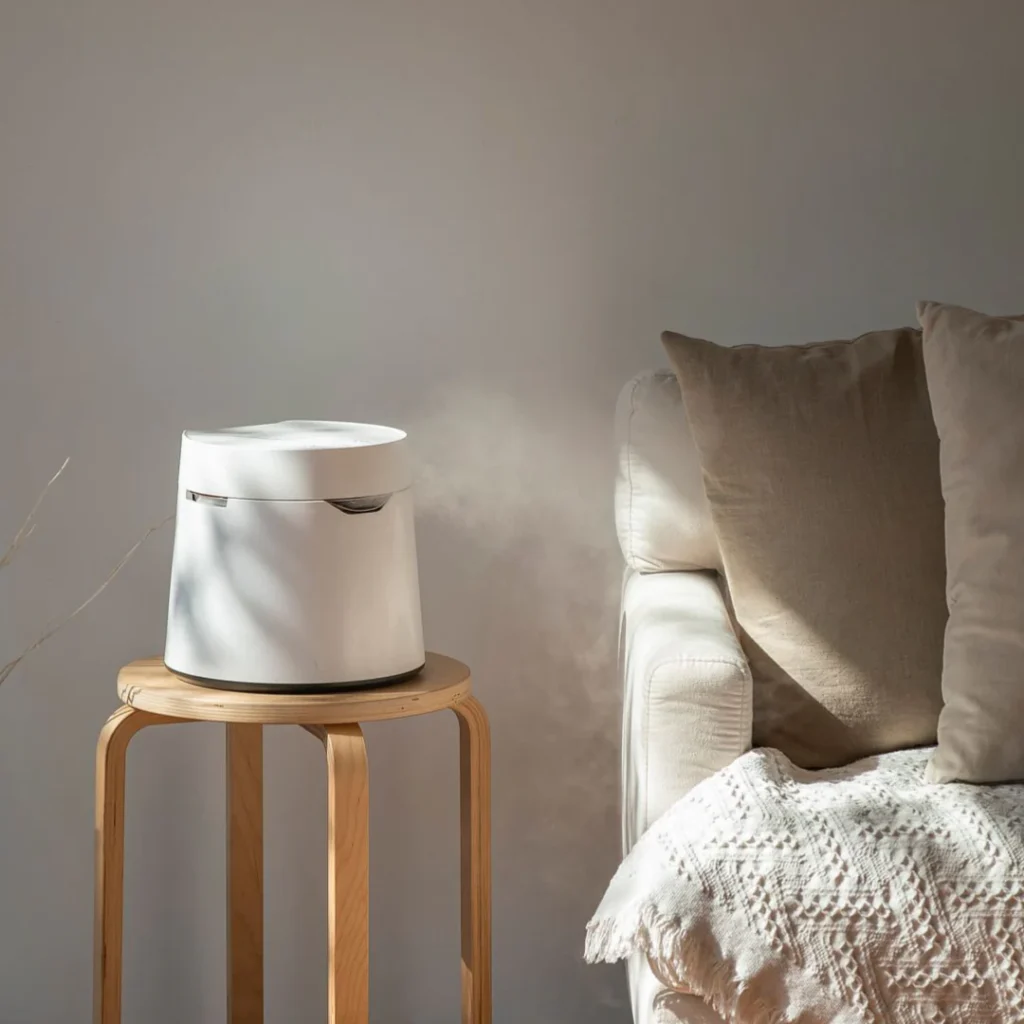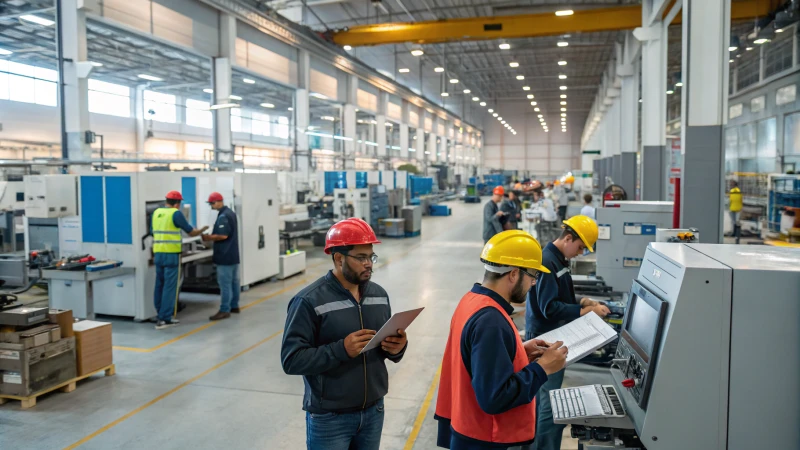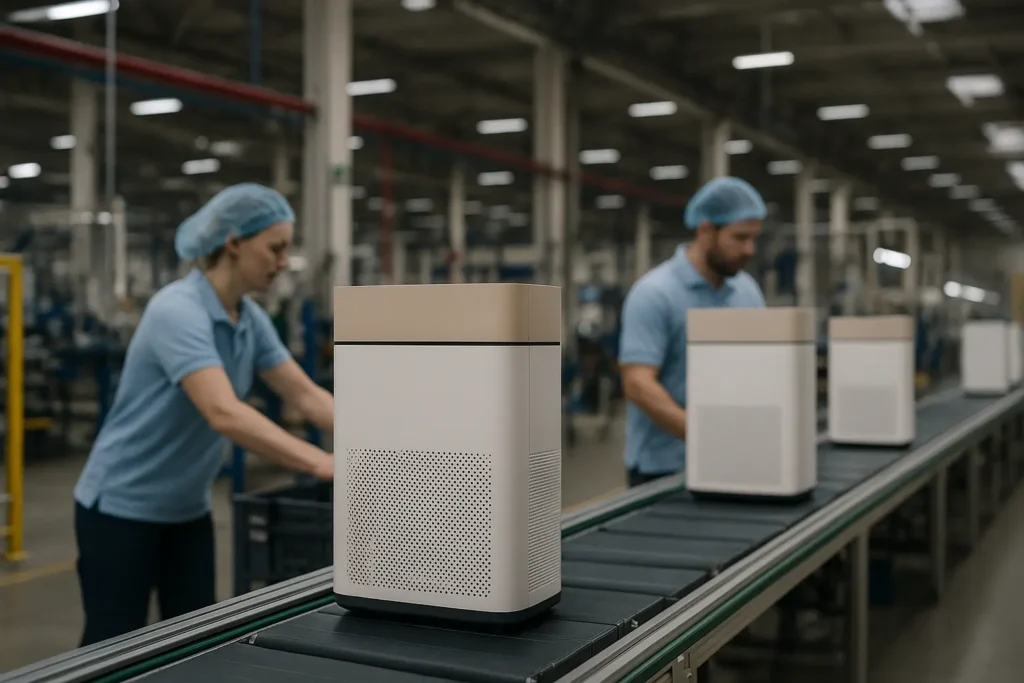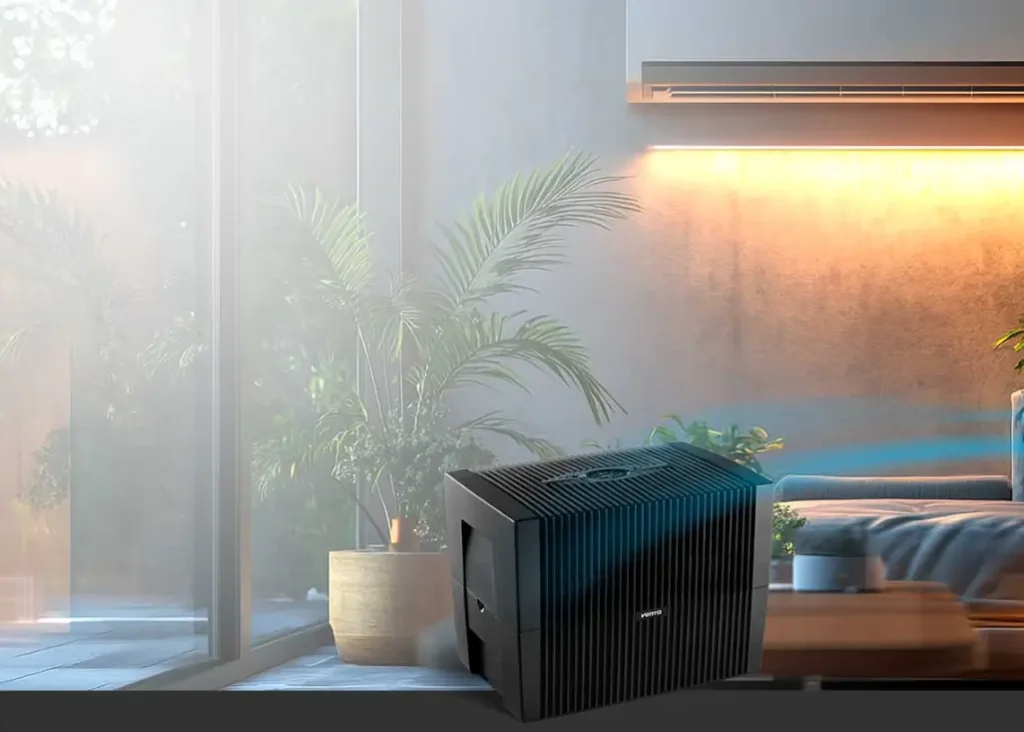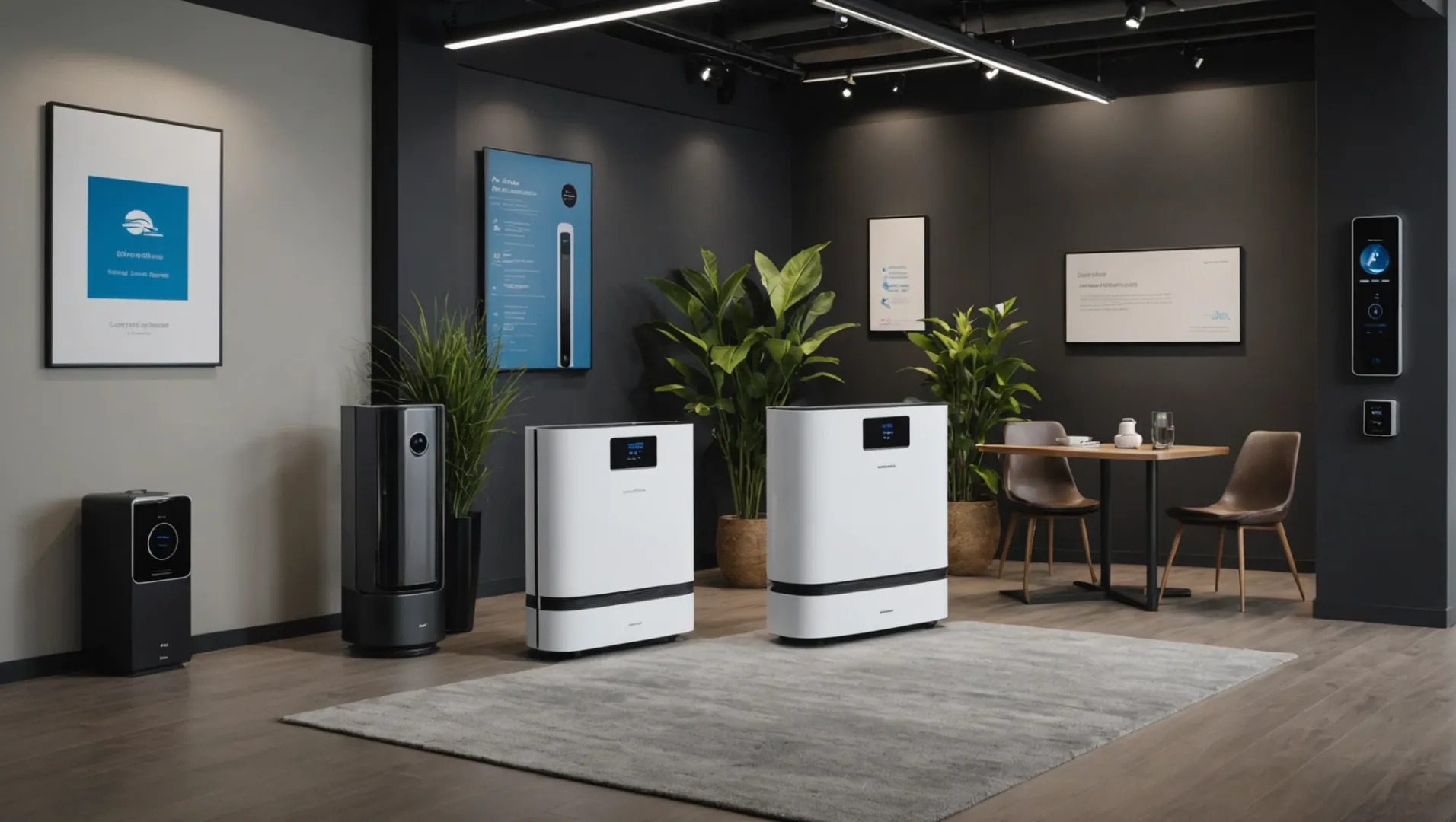
よりきれいな空気を求めて、私は空気清浄機の最安値を見つけることは、値札を見るだけではないことを発見した。その数字の下にあるものを理解することなのだ。
さまざまなメーカーの空気清浄機の価格を効果的に比較するには、次のような主要な機能に注目する。 CADRノイズレベル、フィルタータイプコストと性能の両方を考慮し、公正な比較を行うために、同様の仕様を評価するようにしてください。
価格は非常に重要ですが、空気清浄機の機能のニュアンスを把握することは、購入の決断を左右します。何が本当に重要なのか、私と一緒に探っていきましょう!
CADRは比較すべき最も重要な機能である。真
CADRは空気清浄機の効率を測定するもので、性能評価には欠かせない。
空気清浄機を比較する際に重視すべき機能とは?
適切な空気清浄機を選ぶには、性能と価値に影響する特定の機能に注意深く注意を払う必要がある。
空気清浄機を比較する場合、次の点に注目する。 CADR騒音レベル、フィルタータイプ、その他のスマートな機能により、最適な空気品質とユーザーの利便性を保証します。
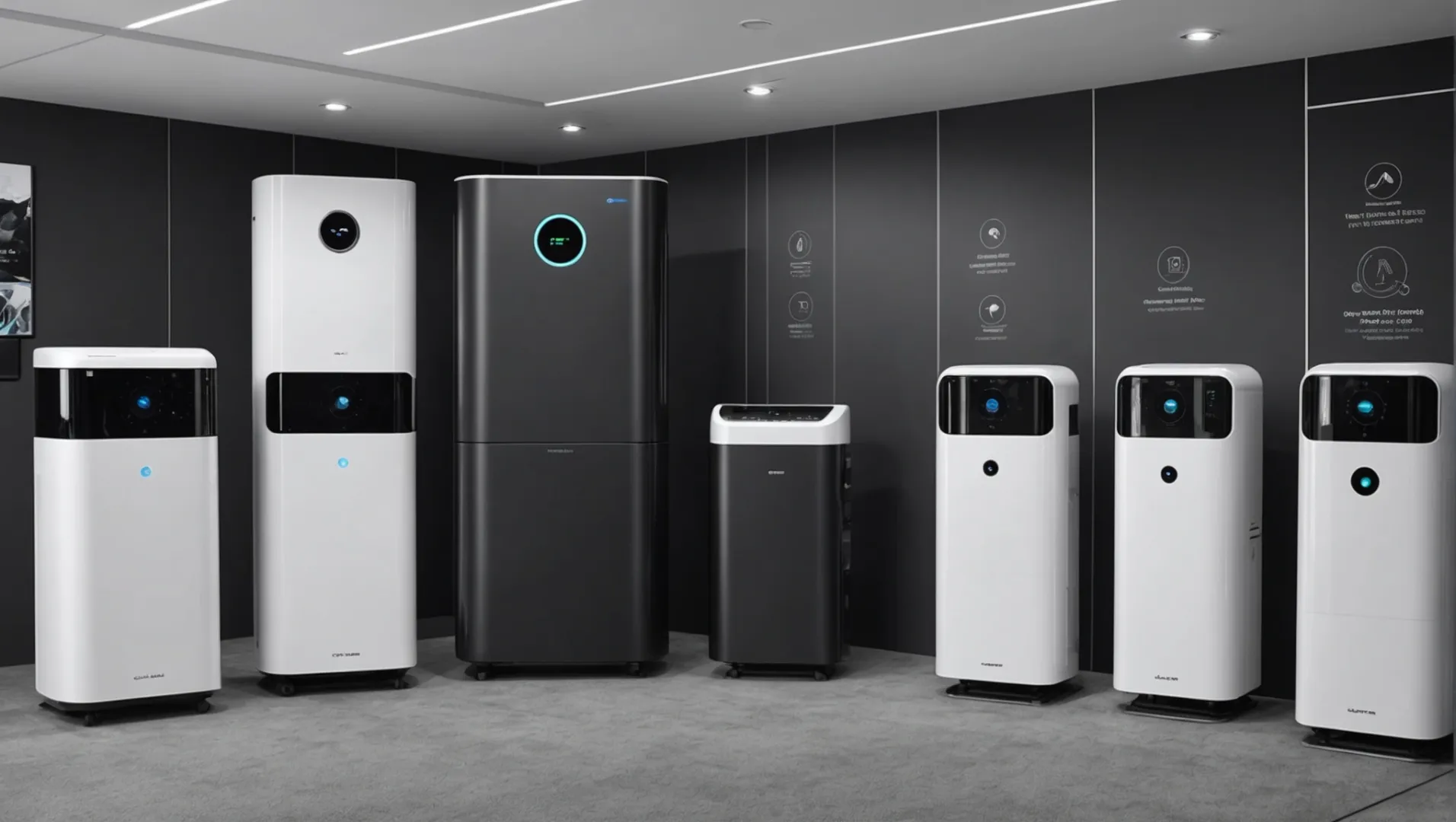
理解する CADR その重要性
クリーンエア供給率(CADR)は、空気清浄機を評価する際に重要な測定値です。これは、空気清浄機が1分間に生成するろ過空気の量を示し、部屋の清浄効率に影響します。高いほど CADR の値は、より速い空気浄化を意味する。
比較 CADR 似たような部屋の大きさの仕様のモデル間の値を比較することで、どのデバイスがより優れた性能を提供するかを評価することができます。覚えておいてください、 に一致する。 CADR1 効果的な浄化には、部屋のサイズに合わせることが不可欠です。
騒音レベルの評価
特に空気清浄機を寝室やオフィスで使用する場合、騒音レベルは快適さに大きく影響します。メーカーが提示するデシベルレベルを確認してください。以下のモデル デシベル・キャンセル・テクノロジー2 より静かな動作を実現し、気が散るような騒音なしに環境を向上させることができます。
| モデル | 騒音レベル (dB) |
|---|---|
| モデルA | 40 dB |
| モデルB | 50 dB |
| モデルC | 35 dB |
フィルターの種類を考える
フィルターの種類は、空気清浄機がどのような汚染物質を除去できるかに重要な役割を果たす。一般的なフィルター ヘパ活性炭、紫外線フィルターなどだ。それぞれ異なる目的を果たす:
- ヘパ フィルター 花粉、ほこり、煙など、わずか0.3ミクロンの粒子を捕集。
- 活性炭フィルター: 臭気とガス状汚染物質を除去する。
- UVライトフィルター: バクテリアやウイルスを殺す。
評価 どのフィルター・タイプ3 アレルギーの軽減や臭いの除去など、お客様の特定のニーズに合わせます。
その他のスマート機能
最近の空気清浄機は、遠隔操作、センサーによる調整、ホームオートメーションシステムとの統合のためのIoT機能などのスマート機能を備えている。リアルタイムの空気品質モニタリングやアプリコントロールなどの機能は、大きな利便性と機能性を提供することができる。
このようなものがあるかどうかを考えてみよう。 スマート機能4 はあなたのライフスタイルに欠かせないものであり、全体的な使いやすさと効率をどのように高めることができるのか。
CADRが高いということは、空気浄化が速いということだ。真
CADRは、1分間に濾過される空気の量を測定し、速度に影響する。
HEPAフィルターが空気中の臭いを除去。偽
HEPAフィルターは小さな粒子を捕捉するが、臭いは除去しない。
なぜサプライヤー固有の技術を評価することが重要なのか?
サプライヤーが提供する独自の技術を理解することは、購買の意思決定に大きな影響を与える。
サプライヤー固有の技術を評価することは、製品の品質、コスト効率、革新性に影響するため、極めて重要です。これらのユニークな製品を理解することで、貴社のニーズとビジネス目標に沿った情報に基づいた意思決定を行うことができます。

独自の技術提供を理解する
空気清浄機を比較する場合、初期費用や以下のような標準機能だけではない。 CADR (清浄空気排出率)と騒音レベル。サプライヤー固有の技術は、他の製品とは一線を画す独自の利点を提供することができます。例えば、HisoAirのデシベルキャンセリング技術は騒音を大幅に低減するため、静かな運転を優先する顧客にとって決め手となる可能性があります。この技術革新は、その付加価値により、より高い価格帯を正当化するかもしれません。
コスト効率におけるイノベーションの役割
サプライヤーの技術革新は、より費用対効果の高いソリューションにつながることが多い。ストームモーター技術のような技術は、効率を高め、エネルギー消費を削減し、長期的な運用コストを下げることができる。このような技術革新を評価することで、企業は初期投資が長期的な節約につながるかどうかを判断することができます。を天秤にかけることが重要である。 技術的メリット5 賢明な投資を確実にするために、価格に対して。
強力なサプライヤーとの関係構築
サプライヤー固有のテクノロジーを理解し、活用することで、より強固なパートナーシップを育むこともできる。サプライヤーが自社のイノベーションを高く評価していることが分かれば、価格交渉や協力関係の強化につながる。 ODM (オリジナル・デザイン・メーカー)プロジェクト部品表(BOM)を大量に扱う場合、サプライヤーのコスト比較が透明化され、独自の技術的優位性が浮き彫りになる。
| 特徴 | サプライヤーA | サプライヤーB |
|---|---|---|
| CADR | 300 m³/h | 280 m³/h |
| 騒音レベル | 45 dB | 50 dB |
| デシベル・キャンセル | はい | いいえ |
| フィルタータイプ | ヘパ | カーボン |
| 革新的なモーター技術 | はい | いいえ |
競争優位性の確保
最後に、これらの技術を評価することで、サプライチェーンの競争力を維持することができます。優れた技術を持つサプライヤーは、より優れた性能や独自の機能を持つ製品を提供することができ、市場で優位に立つことができます。この競争上の優位性は、顧客満足度を維持し、長期的なビジネスの成功を達成するために極めて重要です。
サプライヤー固有の技術に注力することで、製品ラインナップを充実させるだけでなく、市場での地位を強化することができる。
サプライヤー固有の技術は、運用コストを下げることができる。真
ストームモーター技術のような技術革新は効率を高め、コストを削減する。
サプライヤーの技術を評価しても、製品の品質には影響しない。偽
これらの技術を理解することは、品質、費用対効果、技術革新に影響を与える。
総費用は空気清浄機購入の決断にどう影響するか?
空気清浄機を選ぶ際には、初期価格だけでなく、トータルコストを考慮することが重要だ。
空気清浄機の総コストには、購入価格、メンテナンス費用、運用コストが含まれます。これらすべての要素を評価することで、空気の質のニーズを満たしながら、長い目で見て予算に合ったモデルを選ぶことができます。
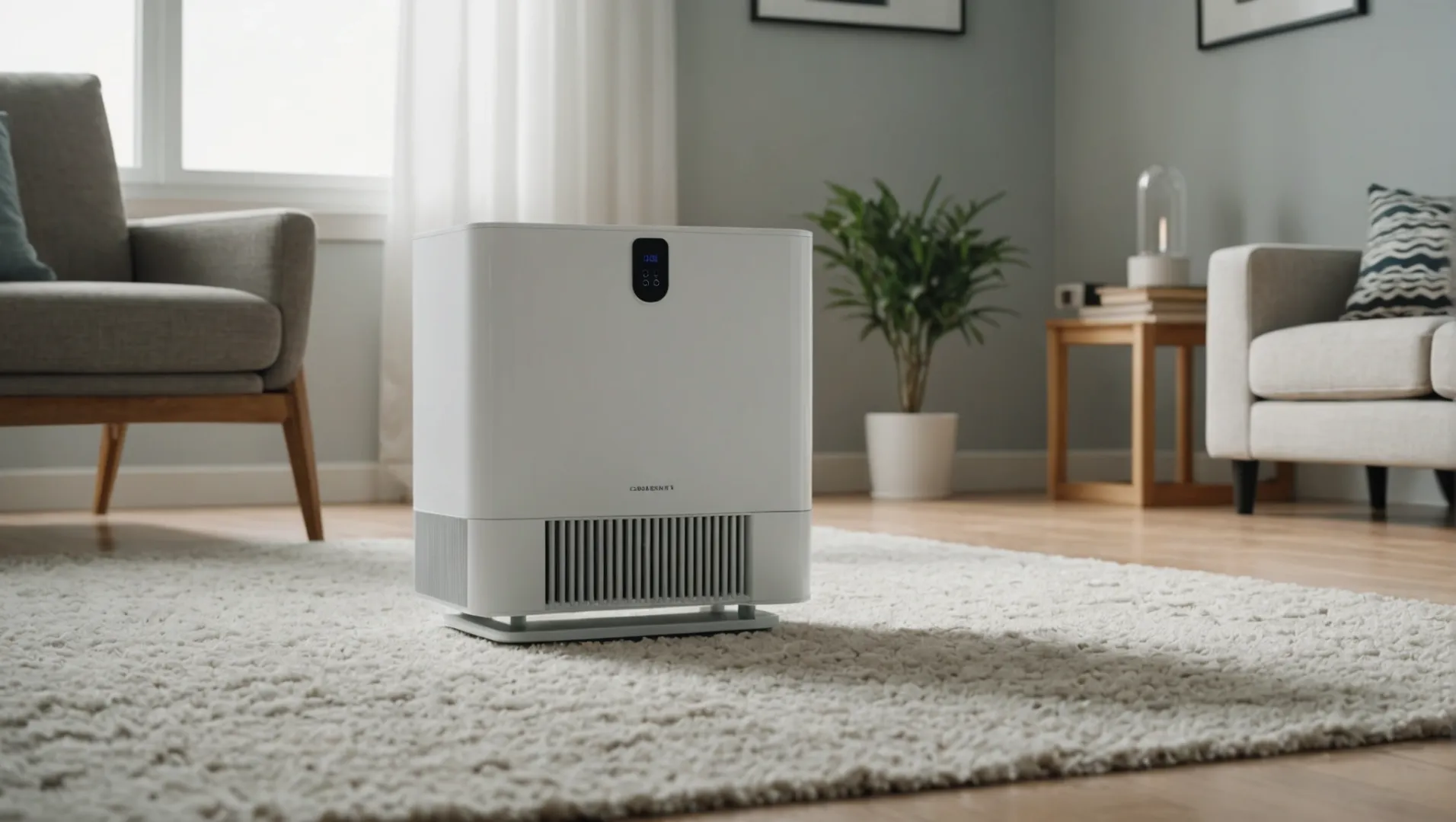
総費用の構成要素を理解する
空気清浄機を評価する際には、3つの主要なコスト要素を考慮する:
- 初回購入価格:空気清浄機を所有するために支払う初期費用です。以下のような機能によって大きく異なる。 CADR (清浄空気排出率)、騒音レベル、フィルタータイプ。より高い CADR 価格が高いということは、性能が良いということでもある。
- メンテナンス費用:最適な性能を得るためには、定期的なメンテナンスが重要です。フィルターの交換費用は、浄水器のメーカーやモデルによって大きく異なります。モデルによっては、交換の代わりにクリーニングが必要な常設フィルターがあり、長期的に費用を節約できる可能性があります。
- 運営コスト:消費電力も含まれます。エネルギー効率の高いモデルは、初期費用は高くつくかもしれませんが、長期的には光熱費を節約することができます。
サプライヤー固有技術の役割
サプライヤーによっては、総コストに影響するような独自の技術を提供しているところもある。例えば ヒソエアの6 デシベル・キャンセレーション・テクノロジーは騒音を低減するだけでなく、エネルギー消費の削減にも貢献する可能性がある。同様に、ストームモーターテクノロジーは、気流効率を高め、運転コストを下げる可能性がある。
長期的なコスト評価の重要性
総費用の評価には、目先の出費だけでなく、その先を見据える必要がある。購入価格が安くても維持費が高いモデルは、維持費が最小限で済む高価な代替品と比べ、長期的には割高になる可能性がある。
| コスト・コンポーネント | 考察の例 |
|---|---|
| 初回購入価格 | 以下のような特徴がある。 CADRIoT機能、センサーの種類 |
| メンテナンス費用 | フィルターの交換頻度とコスト |
| 運営コスト | エネルギー消費と効率評価 |
より良いサプライヤー交渉のためのトータルコストの活用
大量の注文がある場合、または、以下のような業務に携わっている場合 ODM を要求している。 BOM (部品表)リストをサプライヤーから入手することは有利である。この透明性により、より積極的で情報に基づいた価格交渉が可能になる。
これらの要素を総合的に評価することで、空気清浄機の選択が予算と空気の質の両方の目標に合致するようになり、最終的に満足度の高い購入体験につながります。
CADRが高いほど、空気清浄機の性能が高いことを示す。真
CADRは、汚染物質を除去する空気清浄機の効率を測定する。
恒久的なフィルターは、交換可能なものより常にコストがかかる。偽
恒久的なフィルターは、交換ではなく清掃が必要なため、長期的なコスト削減が期待できる。
比較のプロセスにおいて、レビューと評価はどのような役割を果たすのか?
賑わいを見せる空気清浄機市場において、レビューや評価は、賢明な購入決定への道を照らす指針となる。
レビューや評価は、ユーザーの生の声や専門家の見識を提供し、製品の信頼性や性能を評価するのに役立ちます。また、一般的な問題や利点が強調されているため、十分な情報に基づいた意思決定が可能です。

ユーザーフィードバックの影響力を理解する
今日のデジタル時代において、レビューや評価は購買プロセスに欠かせないものとなっている。レビューや評価は、その製品をすでに使用したことのある人たちによる本物の洞察を提供してくれます。これらを考慮することで、空気清浄機の実際の性能や潜在的な性能について、より明確な理解を得ることができます。 課題7そして際立った特徴。
レビューの種類ユーザー対専門家
-
ユーザーレビュー:日常的なユーザーからのフィードバック。使いやすさ、メンテナンスの課題、顧客サービスの経験など、実用的な側面が強調されることが多い。
-
専門家のレビュー:技術系サイトや消費者向けサイトでよく見られるもので、技術的な仕様を深く掘り下げ、類似モデルとの比較を行う。以下のような点を掘り下げている。 CADR8 とフィルターの寿命について、より詳しく説明する。
批評を批判的に評価する
すべてのレビューが同じように作成されるわけではありません。中には偏見や煽りを受けているものもあるかもしれない。したがって、次のことが重要です:
- パターンを探す:複数のレビューで、作りの悪さや動作音のうるささについて言及されている場合、これらは正当な懸念事項である可能性があります。
- ソースをチェックする:レビュープラットフォームの信頼性を確認する。信頼できる情報源には、肯定的なフィードバックと否定的なフィードバックが混在していることが多い。
格付け概要
格付けは、顧客満足度のスナップショットを提供します。高評価の製品は、一般的に信頼性と効率性を示している。しかし、それは不可欠である:
- 評価の数を考えてみよう。10人のユーザーからの5つ星評価は、1000人からの1つ星評価よりも信頼性が低い。
- フィードバックが空気清浄機の現在のモデルまたはバージョンを反映していることを確認するために、最近の評価を探します。
意思決定における評価の活用
異なるサプライヤーと比較するのですから、AサプライヤーにBサプライヤーと価格と品質を比較していることを伝えれば、サプライヤーにプレッシャーを与えることができ、より良い価格を得ることができます。しかし、あなたの意思決定のために、あなたのリスクを下げるために不可欠である潜在的なサプライヤーの評判についてのいくつかの情報を収集する必要があります。
結論
コストと品質や技術を天秤にかけることで、空気清浄のニーズを満たす賢い買い物ができるのだ。
-
CADRをお部屋のサイズに合わせることで、最適な空気清浄を実現します:この記事では、空気清浄機の適切なサイズを特定するために不可欠な3つのステップと、CADRと呼ばれる指標がどのように役立つかについて説明します。 ↩
-
空気清浄機の運転音をより静かにする技術について..:HiSo空気清浄機はDecibel Cancellation™(デシベル・キャンセリング)技術を採用し、密度の低いフィルターを使用できるようになりました。帯電した粒子が付着しやすくなるため、空気清浄機の運転音が小さくなります。 ↩
-
あなたのニーズに最適なフィルタータイプを特定するのに役立ちます:エアフィルターの種類とは?- HEPAフィルター - 紫外線フィルター - 静電フィルター - 洗えるフィルター - メディアフィルター - スパングラス製フィルター ... ↩
-
空気清浄機の使いやすさを向上させるスマートな機能をご覧ください:しかし、よく設計された空気清浄機は、花粉やカビの胞子などの空気中に浮遊するアレルゲンや、バクテリア、ウイルス、細菌など、事実上すべてのアレルゲンを捕捉することができます。 ↩
-
イノベーションがいかにコストを削減し、空気清浄機の効率を向上させるかをご覧ください:この革新的なアプローチは、ナノ粒子サイズからそれ以上のサイズまで、最大99%の粒子状物質を同時に減少させ、また、... ↩
-
HiSoの空気清浄機は、デシベル・キャンセリング™テクノロジーを採用しています:HiSo空気清浄機はDecibel Cancellation™(デシベル・キャンセリング)技術を採用し、密度の低いフィルターを使用できるようになりました。帯電した粒子がより付着しやすくなるため、空気清浄機を使用する際の ... ↩
-
空気清浄機を購入する前に、潜在的な落とし穴を発見しましょう:メンテナンスが不適切な空気清浄機は、フィルターが汚れていたり、目詰まりしていたり、モーターが故障していたり、その他全体的な機能に影響を及ぼす問題があります。 ↩
-
なぜCADRが空気清浄機の効率にとって重要なのか?CADRが高い空気清浄機を選ぶと、ホコリ、花粉、煙、塵、花粉などの汚染物質を効果的に除去することができます。 ↩



